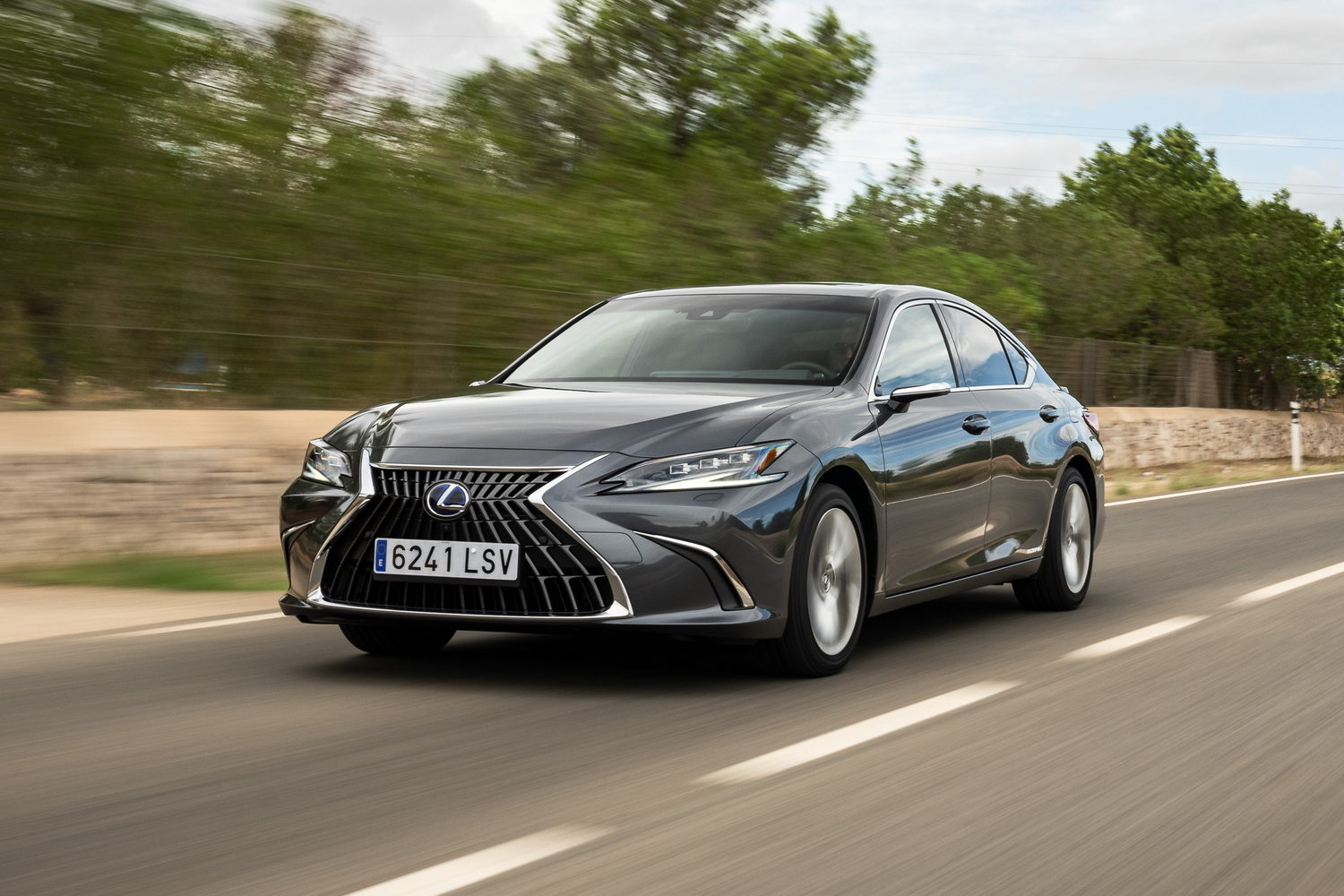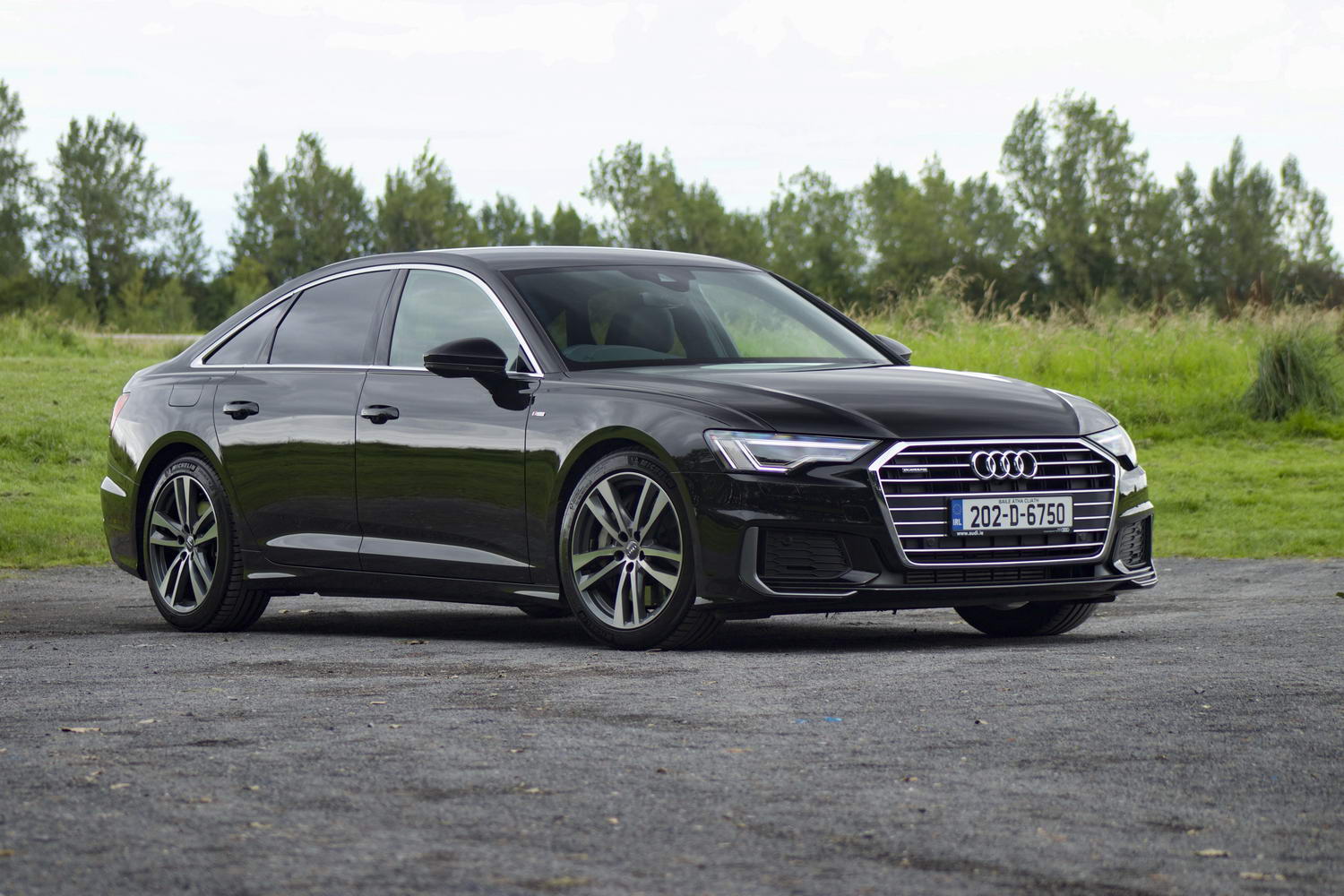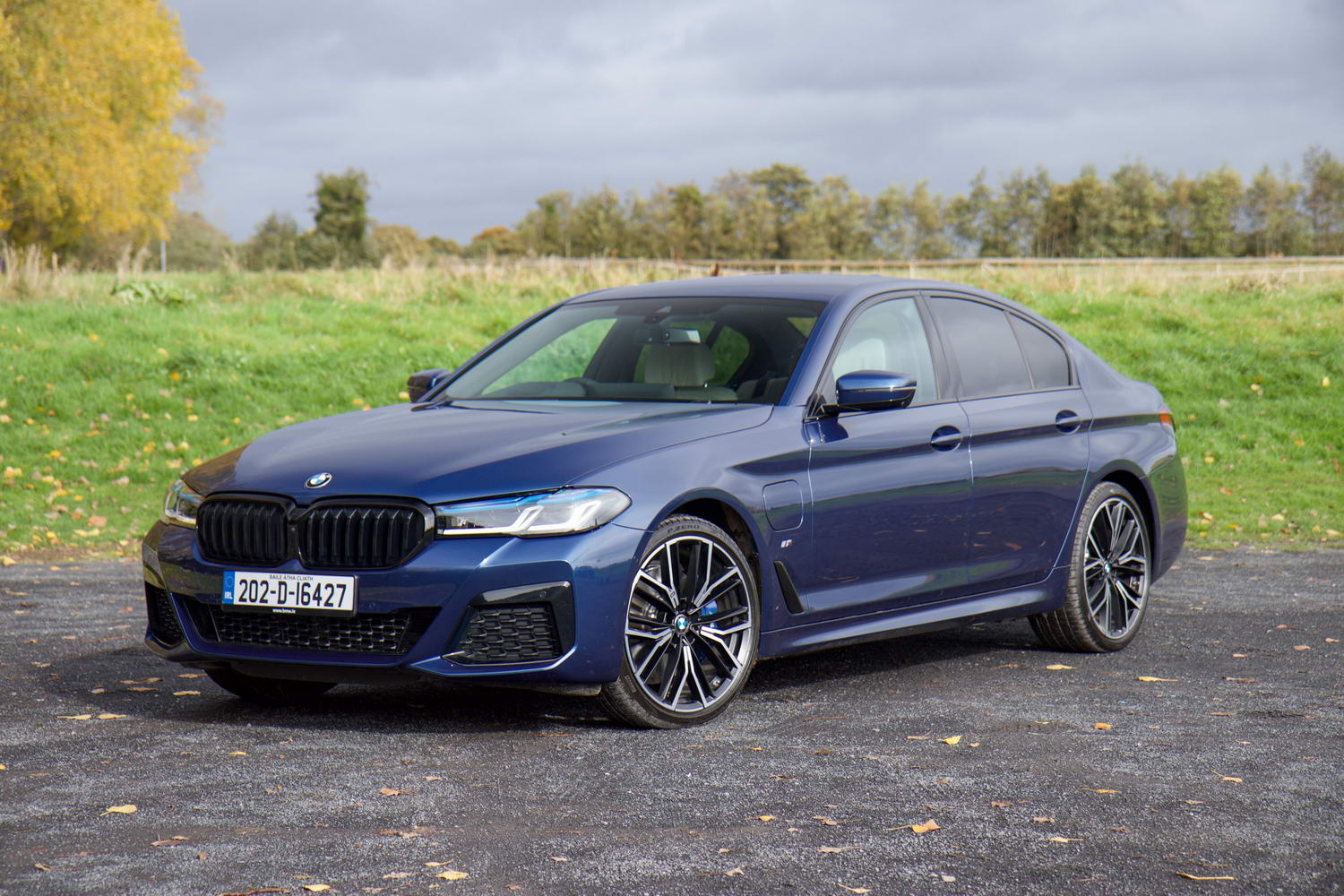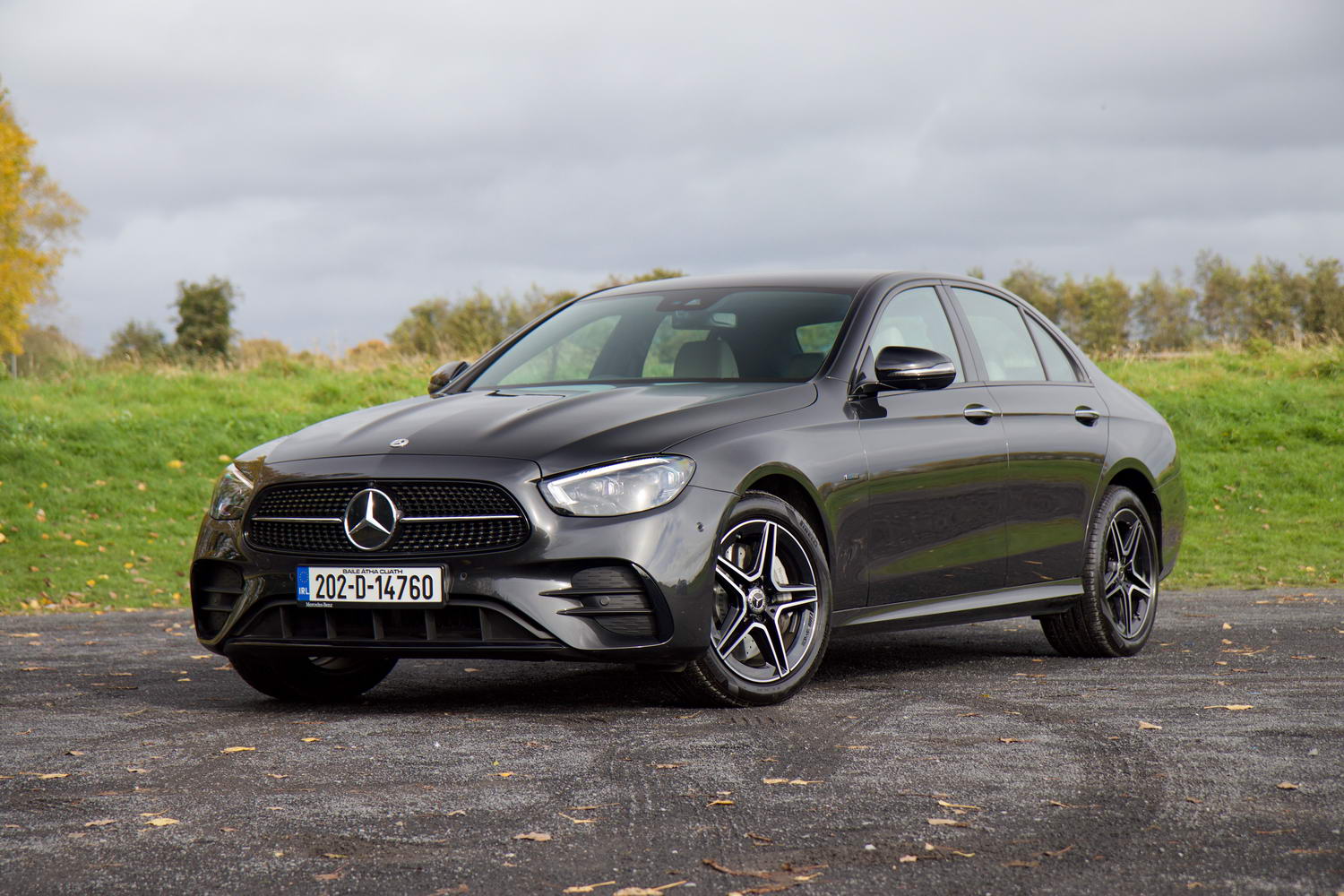The premium saloon segment is one dominated by a triumvirate of German cars, but the Lexus ES is an outlier that deserves consideration. The hybrid-only line-up does put the ES at a disadvantage in a segment that is dominated by diesel - and more recently, plug-in hybrids - but Lexus fights back with an unbeatable reputation for reliability and generous levels of standard equipment for the price. Following its first introduction to Europe in 2018, the ES has now come in for a subtle update for 2022 with improvements to the interior design.
In the metal
The Lexus ES has presence not only due to its striking exterior design - that is influenced by the company's flagship LS saloon - but it's also longer and lower than its main rivals, the Audi A6, BMW 5 Series and Mercedes-Benz E-Class. Those generous proportions mean good interior space. At 454 litres the boot is smaller than diesel-engined competitors, but it's more spacious than those in the plug-in hybrid competition thanks to a more compact battery.
You'll need to take quite a close look to spot the exterior design changes that make up this updated Lexus ES. The number of vertical bars on the distinctive grille have been reduced while the already slender headlights gain a new internal design. The latter features a new daytime running light signature and 'Bi-Beam LED' headlights comprise three-lens LED units. Lexus also offers its BladeScan AHS (Adaptive High-beam System) technology that is akin to the various matrix-style headlights that can dynamically alter illumination.
The subtle changes continue to the interior, largely focusing around a new 12.3-inch display for the infotainment system. Unlike its predecessor, this is now a touchscreen unit, though it can also be controlled by the touchpad on the centre console. The Lexus infotainment system is the most basic among its rivals, though the availability of Android Auto and Apple CarPlay means many won't notice.
Lexus is one of only a few car makers to offer a camera-based alternative to side mirrors. The system uses wide-angle cameras in small aerodynamic pods where the door mirrors would usually be and sends a live feed to colour screens on the base of each A-pillar by the windscreen. Designed to provide clearer visibility in low-light and inclement weather conditions, the cameras are also designed to reduce LED flickering. Some will view this tech as a novelty and, as a €2,000 extra available only on the top-spec Premium model, it's likely to remain a rare sight in Ireland.
Driving it
Despite all of its direct rivals now offering plug-in hybrid options Lexus is sticking with a conventional hybrid powertrain for the updated ES 300h. A 2.5-litre naturally aspirated four-cylinder petrol engine runs on the efficient Atkinson cycle and, working with the electric motor, the hybrid system has a combined maximum power output of 218hp. The battery is underneath the rear seats and is a nickel-metal hydride unit as before. This type of battery design is optimised for hybrid running as it can quickly recharge and discharge its energy.
With an official fuel consumption figure of 5.2 litres/100km, the ES is theoretically capable of delivering diesel-like economy. Its 50-litre fuel tank gives a driving range of up to 960 kilometres based on that figure. Positively, after a lengthy driving route over mixed conditions, including some motorway sections, the trip computer indicated 5.3 litres/100km. Tailpipe emissions of CO2 of between 119- and 132g/km (depending on specification) place it into the lower end of the motor tax bands, too.
The ES is very much a car focused on comfort and refinement. Easing away from rest under battery power highlights the way in which the Lexus can isolate you from the outside world. Acoustically optimised glass and sound insulation further add to the quietness.
So long as you're prudent with your accelerator inputs the 2.5-litre engine gently comes to life and is now even quieter thanks to a new polyurethane cover. Pleasingly little vibration is present from the transmission as the ES gathers pace. Attempts to hurry along proceedings are met by a flurry of engine revs but little else due to lack of torque. Both diesel and plug-in hybrid competitors have considerably more.
But there's more to the ES than that and, with a slight shift in driving style, the Lexus quickly becomes a car that is not only comfortable but effortless to drive, too.
Bump absorption is excellent and so long as you don't attack speed humps the Lexus gracefully glides over them. Additional support where the rear suspension meets the chassis brings greater rigidity to the back end, giving the sensation of a quicker and more precise turn in. While it doesn't quite encourage you to hustle it along for the fun of it, there's a level of body control present that makes the ES a well-rounded car.
What you get for your money
Pricing is where the Lexus ES puts across a compelling case for itself with a starting price of €50,950 - that's only a €50 increase for this updated model. The Dynamic specification is the first of three available in Ireland and includes 18-inch alloy wheels, synthetic leather, electrically adjustable heated front seats and keyless entry. Also featuring as standard is a seven-inch digital instrument display and the 12.3-inch touchscreen infotainment system. Blind spot monitor, rear cross traffic alert, adaptive cruise control, sunroof, wireless charger, traffic sign recognition and lane departure warning are some of the other standard items.
The mid-range F Sport trim starts at €58,195 and adds 19-inch alloy wheels, adaptive variable suspension, an eight-inch digital instrument display, leather upholstery and driver seat memory function. The top-spec ES Premium costs €63,650 and gets a vast array of equipment. Bi-LED illumination, built-in navigation, a Mark Levinson surround sound stereo system, heated steering wheel and semi aniline leather upholstery with heated and ventilated seats all feature.
Summary
On the face of it, the Lexus ES, with its sole petrol hybrid powertrain offering, is doing battle with the German alternatives with one hand metaphorically tied behind its back. Nonetheless, more car buyers than ever are moving away from diesel so it's more relevant than ever. Huge levels of standard equipment combine with Lexus' renowned reputation for build quality and a competitive entry price to make the new ES a car that buyers should take seriously. The 2022 updates only serve to enhance its appeal.
























